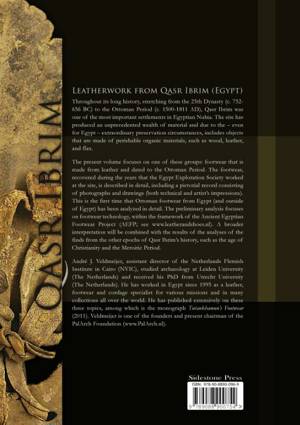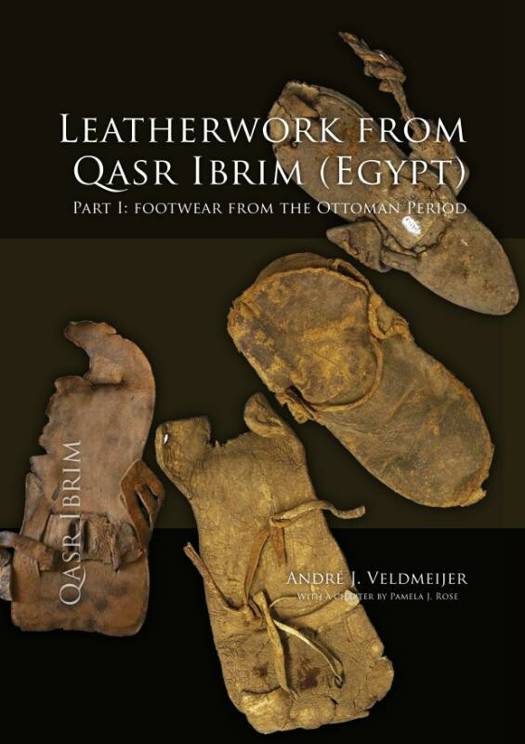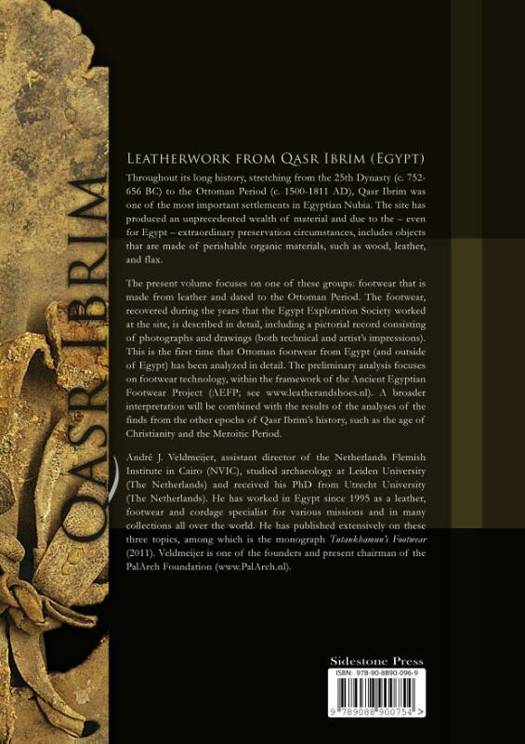
- Afhalen na 1 uur in een winkel met voorraad
- Gratis thuislevering in België vanaf € 30
- Ruim aanbod met 7 miljoen producten
- Afhalen na 1 uur in een winkel met voorraad
- Gratis thuislevering in België vanaf € 30
- Ruim aanbod met 7 miljoen producten
Zoeken


Leatherwork from Qasr Ibrim (Egypt). Part I
Footwear from the Ottoman Period
Andre J Veldmeijer
Paperback | Engels
€ 95,00
+ 190 punten
Omschrijving
Throughout its long history, stretching from the 25th Dynasty (c. 752-656 BC) to the Ottoman Period (c. 1500-1811 AD), Qasr Ibrim was one of the most important settlements in Egyptian Nubia. The site has produced an unprecedented wealth of material and due to the - even for Egypt - extraordinary preservation circumstances, includes objects that are made of perishable organic materials, such as wood, leather, and flax.
The present volume focuses on one of these groups: footwear that is made from leather and dated to the Ottoman Period. The footwear, recovered during the years that the Egypt Exploration Society worked at the site, is described in detail, including a pictorial record consisting of photographs and drawings (both technical and artist's impressions). This is the first time that Ottoman footwear from Egypt (and outside of Egypt) has been analyzed in detail. The preliminary analysis focuses on footwear technology, within the framework of the Ancient Egyptian Footwear Project (AEFP; see www.leatherandshoes.nl). A broader interpretation will be combined with the results of the analyses of the finds from the other epochs of Qasr Ibrim's history, such as the age of Christianity and the Meroitic Period.
The present volume focuses on one of these groups: footwear that is made from leather and dated to the Ottoman Period. The footwear, recovered during the years that the Egypt Exploration Society worked at the site, is described in detail, including a pictorial record consisting of photographs and drawings (both technical and artist's impressions). This is the first time that Ottoman footwear from Egypt (and outside of Egypt) has been analyzed in detail. The preliminary analysis focuses on footwear technology, within the framework of the Ancient Egyptian Footwear Project (AEFP; see www.leatherandshoes.nl). A broader interpretation will be combined with the results of the analyses of the finds from the other epochs of Qasr Ibrim's history, such as the age of Christianity and the Meroitic Period.
Specificaties
Betrokkenen
- Auteur(s):
- Uitgeverij:
Inhoud
- Aantal bladzijden:
- 462
- Taal:
- Engels
Eigenschappen
- Productcode (EAN):
- 9789088900969
- Verschijningsdatum:
- 28/02/2013
- Uitvoering:
- Paperback
- Formaat:
- Trade paperback (VS)
- Afmetingen:
- 206 mm x 292 mm
- Gewicht:
- 1315 g

Alleen bij Standaard Boekhandel
+ 190 punten op je klantenkaart van Standaard Boekhandel
Beoordelingen
We publiceren alleen reviews die voldoen aan de voorwaarden voor reviews. Bekijk onze voorwaarden voor reviews.












